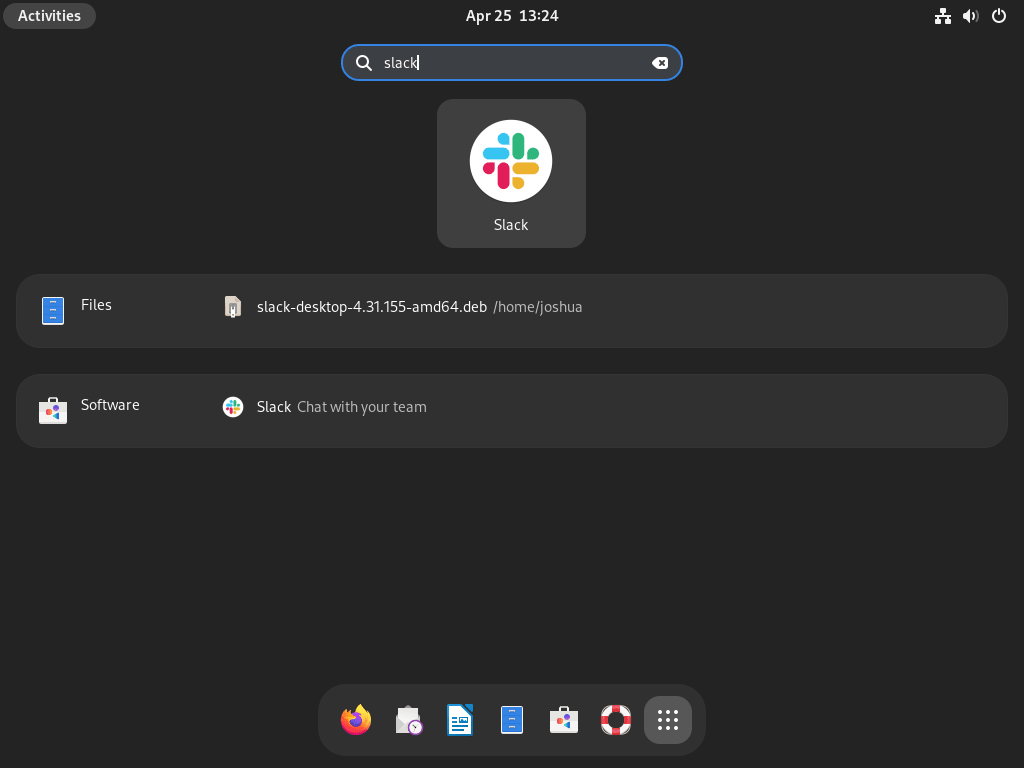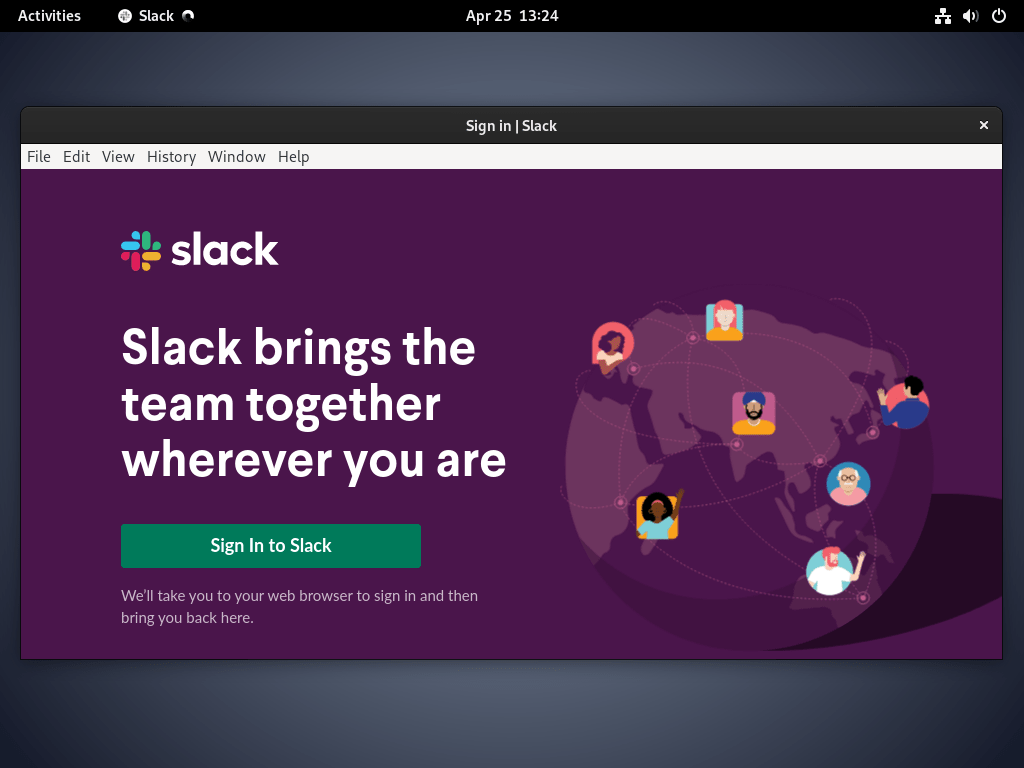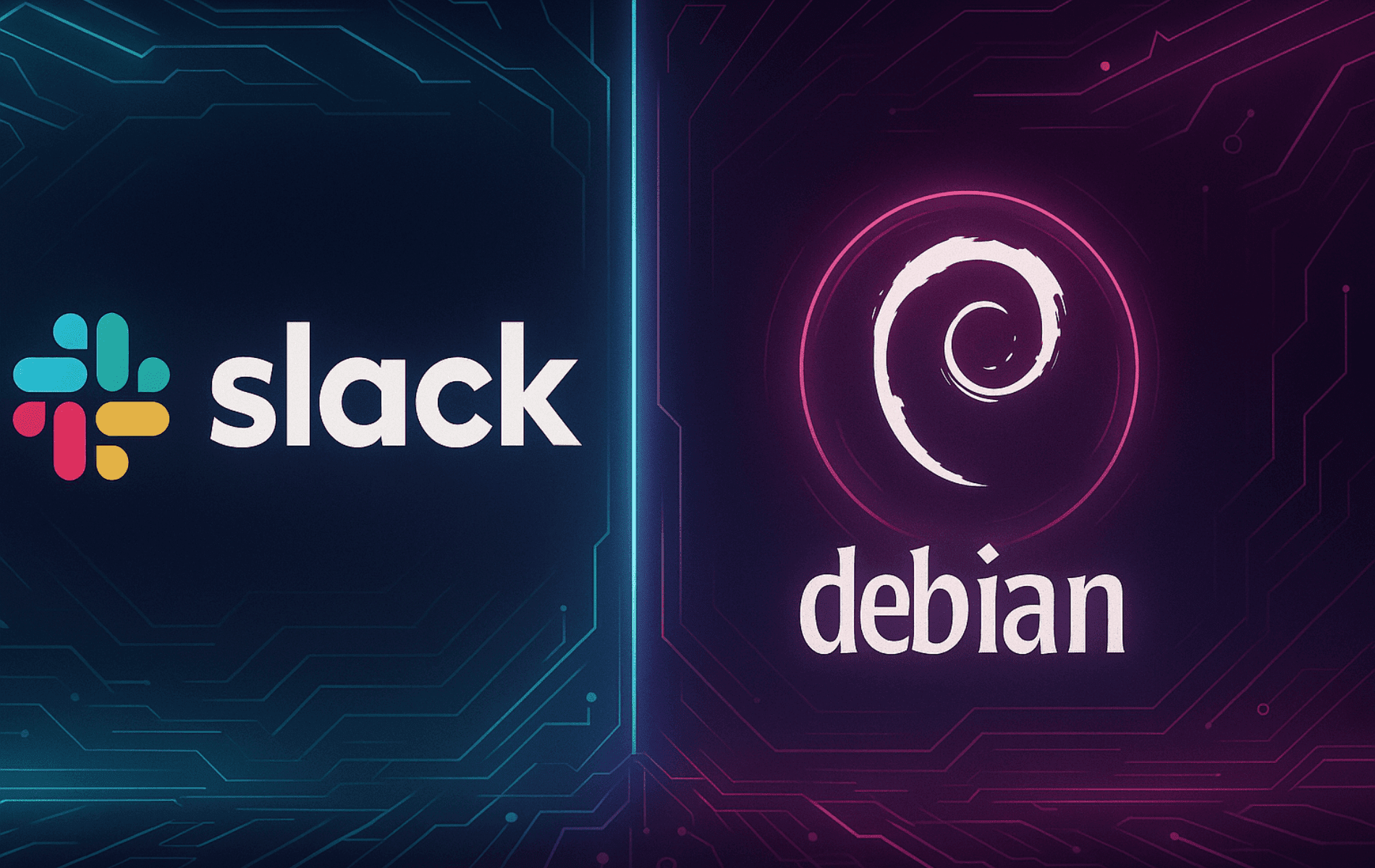Slack is a premier collaboration platform, and for Debian users, learning how to install Slack on Debian is key to unlocking a unified workspace for communication, file sharing, and enhanced team collaboration. Whether you’re managing projects, engaging in discussions, or integrating workflows, Slack’s robust features ensure seamless productivity across various devices and platforms once you set it up on your Debian system.
This guide provides a detailed walkthrough for installing Slack on Debian 12 “Bookworm” and Debian 11 “Bullseye”. With this step-by-step tutorial, you’ll quickly learn to set up Slack using either the .deb package or Flatpak, enabling efficient team collaboration.
Installing Slack on Debian
You can install Slack on Debian 12 or 11 using two methods: the .deb package or Flatpak. Below are the detailed steps for each approach.
Option 1: Install Slack via .deb Package
To install Slack using the .deb package, start by ensuring your system is up to date. Open a terminal and run the command:
sudo apt update && sudo apt upgradeThe next step is to download the Slack .deb package. First, navigate to your Downloads directory or a chosen temporary directory. For example:
cd ~/DownloadsAfterward, visit the official Slack downloads page and locate the latest Debian package link. Copy the link and use the wget command to download it.
Replace the example URL in the command below with the current version link from the Slack website. The version numbers (x.x.x) in the download URL and filename will vary:
wget https://downloads.slack-edge.com/releases/linux/x.x.x/prod/x64/slack-desktop-x.x.x-amd64.debAfter the download completes, and assuming you are in the directory containing the downloaded file, install the package with the apt command. The following example assumes the filename remains consistent with the downloaded file. Use the wildcard * to simplify version changes:
sudo apt install ./slack-desktop-*.*.*-amd64.debThe wildcard (*) in ./slack-desktop-*.*.*-amd64.deb should generally match the downloaded file. If Slack significantly changes its naming convention or if you encounter issues with the wildcard, you can use the exact filename instead (e.g., sudo apt install ./slack-desktop-4.35.126-amd64.deb). The command will handle the update process and ensure it satisfies all dependencies.
This command will handle the installation along with any required dependencies automatically. After you complete these steps, Slack will be ready for you to use on your Debian system.
Option 2: Install Slack via Flatpak and Flathub
If you prefer a sandboxed installation method, Flatpak provides an excellent alternative. First, ensure you have installed Flatpak on your system. If you have not installed it, refer to our Flatpak setup guide for Debian.
Once you have installed Flatpak, add the Flathub repository to access Slack. Use the following command to add the repository:
sudo flatpak remote-add --if-not-exists flathub https://flathub.org/repo/flathub.flatpakrepoAfter adding Flathub, install Slack by running the following command:
flatpak install flathub com.slack.Slack -yThe Flatpak installation ensures Slack runs in a sandboxed environment, providing additional isolation and security.
Launching Slack on Debian
After installing Slack, you can launch the application using either the command line or the graphical interface, depending on your preference.
To launch Slack from the terminal, type the following command if you installed it using the .deb package:
slackIf you installed Slack using Flatpak, use this command instead:
flatpak run com.slack.SlackFor those who prefer using the graphical interface, open the application menu in your desktop environment. Search for “Slack” in the menu’s search bar or locate the Slack icon in the list of installed applications. Click the icon to launch the application.
Once Slack starts, you can log in to your workspace or create a new one if you don’t have an account yet.


Updating Slack on Debian
Keeping Slack up to date ensures you have access to the latest features and security patches. The update method depends on how you installed Slack.
If you installed Slack using the .deb package, you’ll need to manually download and install the latest version. Visit the Slack downloads page again, then copy the latest .deb package URL, and use wget to download it. After downloading, install the updated package with the apt command:
sudo apt install ./slack-desktop-*.*.*-amd64.debThe wildcard (*) in ./slack-desktop-*.*.*-amd64.deb should generally match the downloaded file. If Slack significantly changes its naming convention or if you encounter issues with the wildcard, you can use the exact filename instead (e.g., sudo apt install ./slack-desktop-4.35.126-amd64.deb). The command will handle the update process and ensure all dependencies are satisfied.
For Flatpak installations, updating is straightforward. Open a terminal and run the following command to update all Flatpak applications, including Slack:
flatpak updateThis command will fetch and apply the latest updates for Slack and any other applications Flatpak manages.
Regularly updating Slack ensures optimal performance and access to the newest collaboration features.
Removing Slack from Debian
If you no longer need Slack on your Debian system, you can easily uninstall it. The method depends on how you initially installed the application.
For .deb package installations, open a terminal, and run the following command to remove Slack:
sudo apt remove slack-desktopThe apt remove command will uninstall Slack. However, it may leave behind system-wide configuration files (which you typically find in directories like /etc, not your personal data in your home directory). If you want to ensure you also delete these system-level configuration files for a more complete removal, use the apt purge command instead:
sudo apt purge slack-desktopFor Flatpak installations, use the following command to uninstall Slack:
flatpak uninstall com.slack.SlackThe Flatpak uninstallation process completely removes Slack from your system, including any sandboxed data.
After removal, you can verify that you have uninstalled Slack by attempting to launch it or checking the list of installed packages. For example, to check if the system still lists the package (it shouldn’t, if you removed it successfully):
For .deb installations:
apt list --installed | grep slack-desktopFor Flatpak installations:
flatpak list | grep com.slack.SlackAttempting to launch Slack via its command (slack or flatpak run com.slack.Slack) should also result in a “command not found” error or similar indication that the application is no longer present.
Conclusion
This guide has provided step-by-step instructions to install Slack on Debian 12 and 11 using either the .deb package or Flatpak. Whether you prefer the traditional APT-based installation or a sandboxed Flatpak environment, the methods this guide outlines ensure a smooth setup experience.
Additionally, we’ve covered how to launch, update, and remove Slack, equipping you to maintain and manage your installation effectively. After installing Slack, you’re now equipped to streamline team communication and foster enhanced collaboration on your Debian system.
Share Your Experience
We hope this guide helped you successfully install and manage Slack on your Debian system. If you have any questions, tips, or experiences to share, we encourage you to leave a comment below. Your insights could assist others in the community and spark meaningful discussions!

